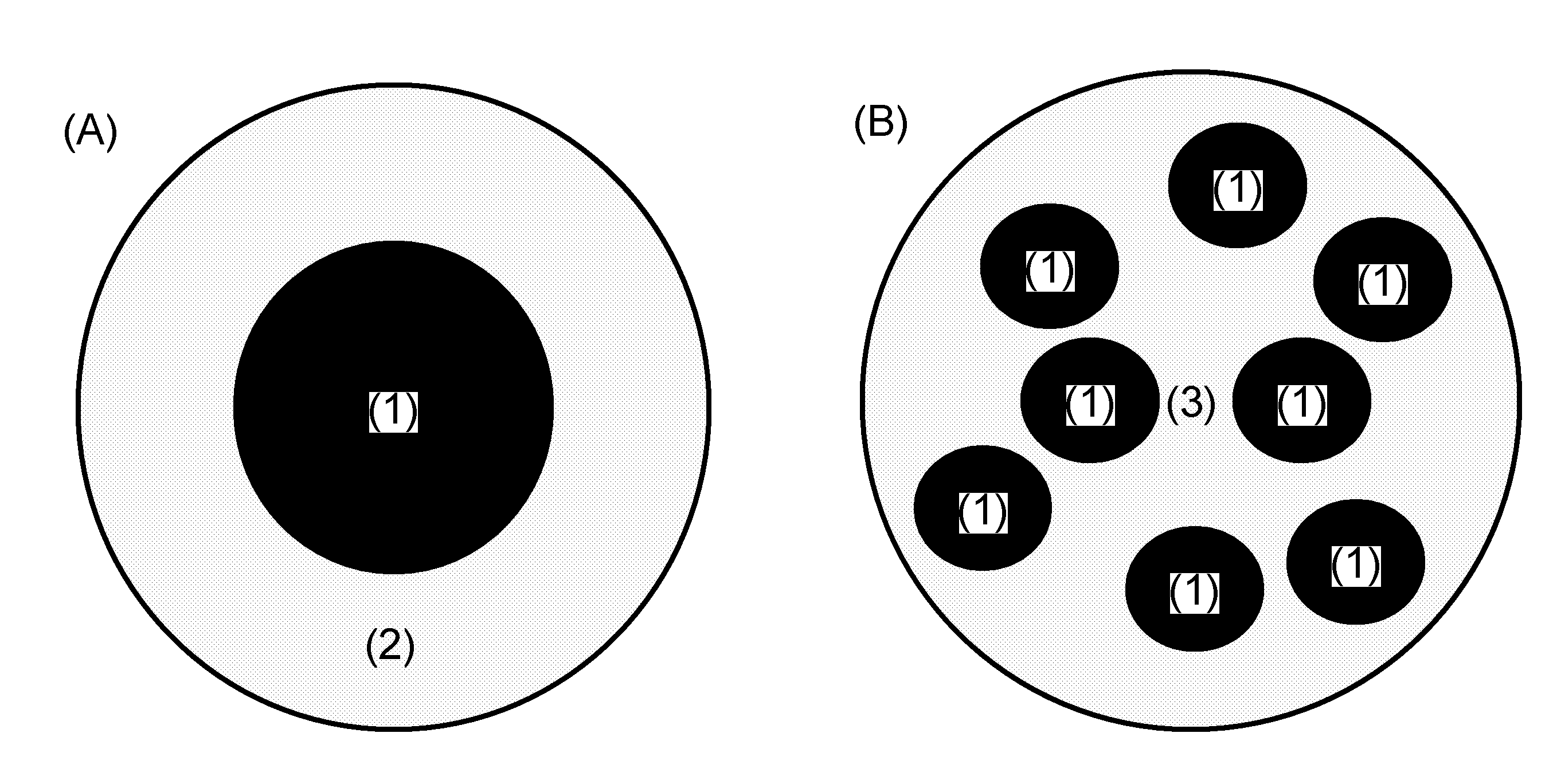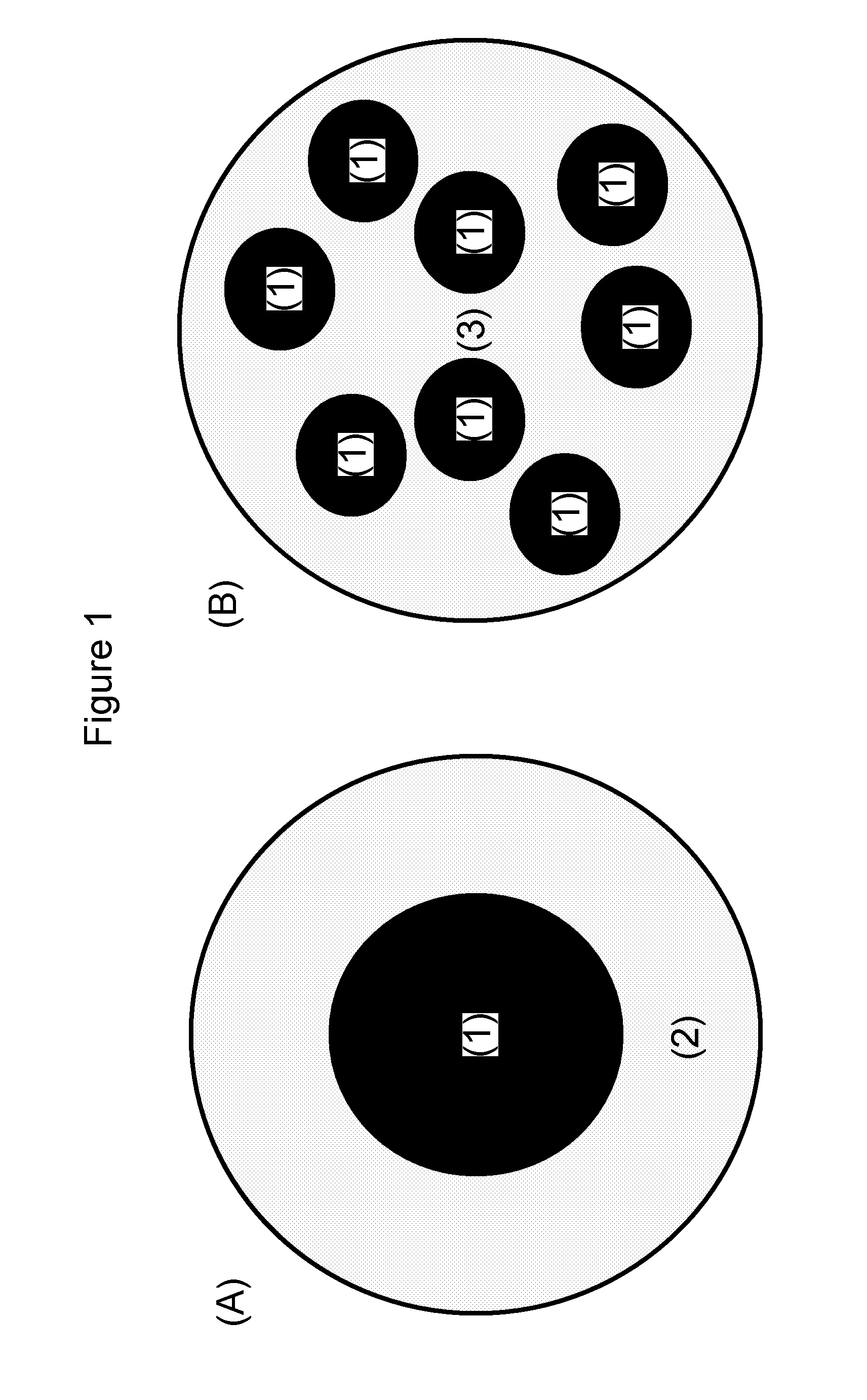Nanoparticle-guided radiotherapy
a radiotherapy and nanoparticle technology, applied in the field of nanoparticle guided radiotherapy, can solve the problems of further complicated treatment, unfavorable implantation for a number of cancer types, and the death of people of all ages, and achieve the effect of afer treatment of the target tissu
- Summary
- Abstract
- Description
- Claims
- Application Information
AI Technical Summary
Benefits of technology
Problems solved by technology
Method used
Image
Examples
example i
Preparations of Liposomes According to the Present Invention
[0249]a. General Example of Preparation Method of Liposomes with Use of Ionophore
[0250]If the CT contrast agent is loaded into liposomes by the help of an ionophore the preferred preparation process comprises the steps of:[0251]a) Mixing lipids of choice, e.g. by first dissolving them in chloroform followed by drying to obtain a thin film of lipids.[0252]b) Hydrating the lipid film with a buffer solution that contains a chemical compound that will either reduce a metal salt to a metal in oxidation state zero or form an insoluble salt with a metal compound in an oxidation state higher than zero, e.g. +1, +2, +3, . . . , or a combination of the reduction and using low solubility salt formation.[0253]c) Utilizing a method to obtain liposomes with a preferred size of 20 to 150 nm as evaluated by cryo-transmission electron microscopy, e.g. homogenization and / or extrusion.[0254]d) Exchanging the exterior buffer by a suitable meth...
example ii
Preparation of Nano-Sized Particles Useful in the Methods of the Present Invention
[0303]a. Procedure for Obtaining Gold Nanoparticle (AuNP) Synthesis of Different Sizes from 16-80 nm
Materials:
[0304]Hydrogen Tetrachloroaurate(III) Tetrahydrate was purchased from Wako Pure Chemical Industries Ldt. Sodium acrylate, sodium hydroxide, nitric acid and hydrochloric acid was purchased from Sigma-Aldrich. MilliQ water was used throughout the preparation of gold nanoparticles (Millipore, Bedford, Mass.). All materials were used without further purification.
Characterization:
[0305]The particles was characterized by dynamic light scattering and zeta potential measurements (Zetasizer Nano; Malvern Instruments, Malvern, UK) as well as by their UV-vis spectra (Unicam Helios Uni-9423). A Tecnai T20 G2 (FEI Company, USA) transmission electron microscope and an atomic force microscope (PSIA XE 150 Park Systems, Korea) were used to visualize the size and homogeneity of the particles.
Synthesis:
16 nm AuN...
example iii
Preparation of Lipid-Coated Nano-Sized Particles Useful in the Methods of the Present Invention
[0326]This Example describes the synthesis of a lipid-coated nano-sized particle.
Step 1: Synthesis of 50 Nm Gold Nano-Sized Particle (AuNP)
[0327]Glassware was washed in aqua regia (HCl:HNO3 3:1) and rinsed extensively with MilliQ water.
[0328]HAuCl4×3H2O (125.2 mg) was dissolved in MilliQ water (1.34 L) and the pH adjusted to 7 using a 0.1 M sodium hydroxide solution. Sodium acrylate (1.72 g, 446.7 mL, 41 mM) in MilliQ water was added to the pH adjusted solution, the flask swirled shortly and left at room temperature for 3-4 days. The wine red color developed slowly during these days. The reaction was monitored by the intensity (OD) in the UV-vis spectra. The AuNPs was concentrated by centrifugation at 6500 rpm for 10 minutes.
[0329]The obtained AuNP at a size of 30 nm was used as seeds to grow 50 nm AuNP. Glassware was washed in aqua regia (HCl:HNO3 3:1) and rinsed extensively with MilliQ w...
PUM
 Login to View More
Login to View More Abstract
Description
Claims
Application Information
 Login to View More
Login to View More - R&D
- Intellectual Property
- Life Sciences
- Materials
- Tech Scout
- Unparalleled Data Quality
- Higher Quality Content
- 60% Fewer Hallucinations
Browse by: Latest US Patents, China's latest patents, Technical Efficacy Thesaurus, Application Domain, Technology Topic, Popular Technical Reports.
© 2025 PatSnap. All rights reserved.Legal|Privacy policy|Modern Slavery Act Transparency Statement|Sitemap|About US| Contact US: help@patsnap.com


